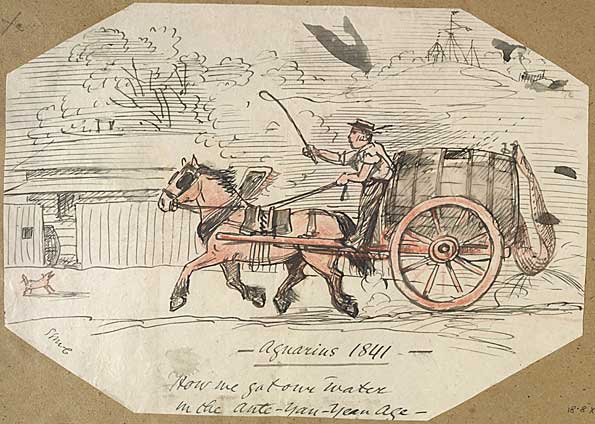 'Aquarius 1841'
'Aquarius 1841'
TLF ID R3319
This is a pen, ink and crayon drawing, measuring 18.8 cm x 26.8 cm, of a man driving a horse and cart, on the back of which is a full water barrel. Buildings and trees are sketched in the background and at the top right is a set of signalling flagpoles. A handwritten inscription at the bottom of the picture reads: 'Aquarius 1841 - How we got our water in the ante-Yan-Yean age'. There are several black marks on the picture where the ink has smudged.
